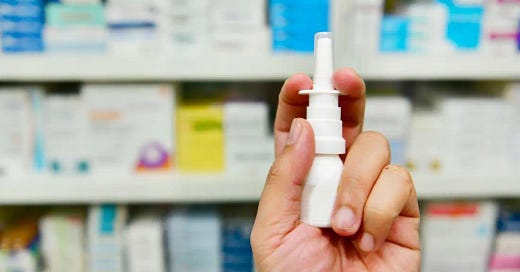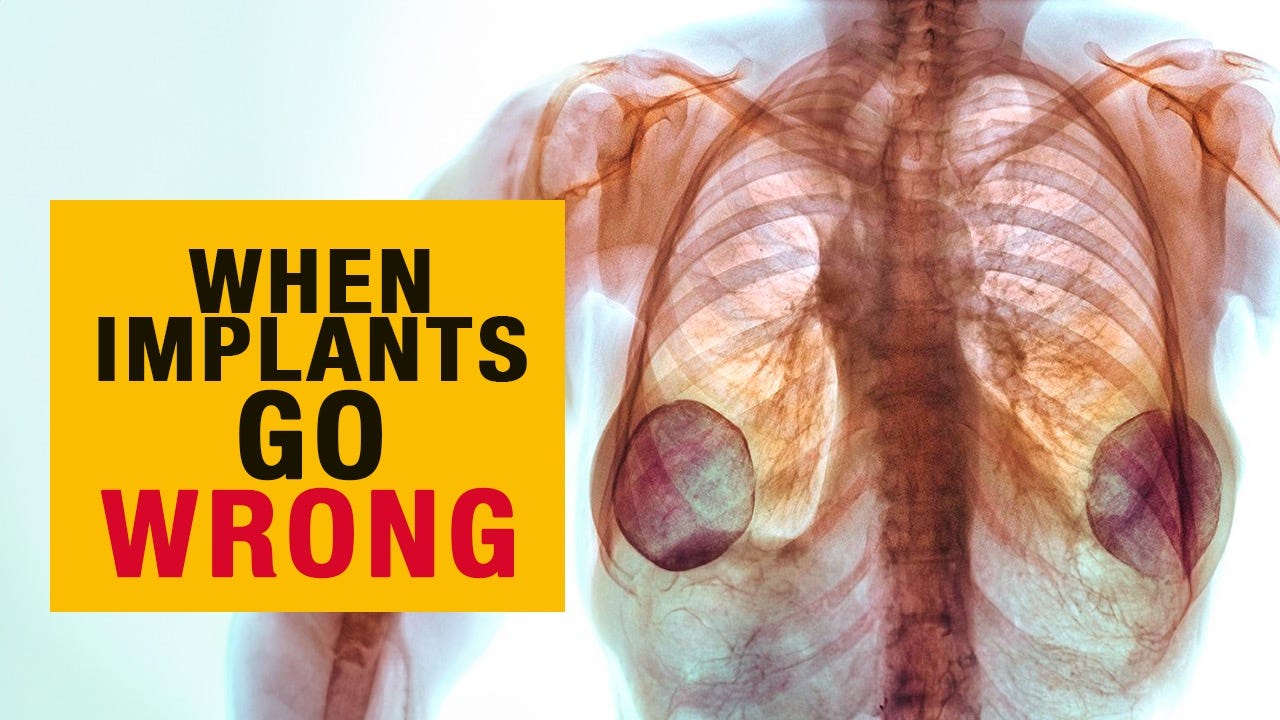Cromolyn Sodium for Mast Cell Activation and Ehlers-Danlos Syndromes: Dr. Linda Bluestein’s Top Medication Picks (Part 3)
We’re back with another edition of The Bendy Bulletin, your go-to resource for navigating life with Ehlers-Danlos Syndromes (EDS), Mast Cell Activation Syndrome (MCAS), and related conditions. Whether you’re seeking practical treatment options or staying up to date on the latest research, this series is designed to equip you with evidence-based insights and tools for managing complex chronic symptoms.
This is Part 3 of our ongoing medication series, highlighting therapies I frequently prescribe to help stabilize symptoms and improve quality of life. In this installment, we’re taking a closer look at cromolyn sodium (Gastrocrom) - a mast cell stabilizer that may be especially helpful for people dealing with MCAS, hEDS, and other hypermobility-related disorders.
(If you missed the earlier parts of this series, you can catch up here: Part 1: Low-Dose Naltrexone (LDN) and Part 2: Ketotifen.)
I’m excited to announce that I’ll be joining the incredible lineup of speakers at this year’s Dance Teacher Web Conference & Expo, the leading event for dance educators and studio owners.
Held in Las Vegas, this four-day conference is designed to help you elevate your teaching, grow your business, and connect with a powerful community of like-minded professionals.
If you’re looking for fresh ideas, expert insights, and the inspiration to take your work to the next level, this is the place to be.
You can learn more and register here:
Hope to see you there.
Cromolyn Sodium vs. Sodium Cromoglicate
Same compound, different names.
In North America, we typically refer to the medication as cromolyn sodium. Elsewhere - particularly in Europe - you may see it listed as sodium cromoglicate. Regardless of the name, both refer to the same active substance: a mast cell stabilizer that plays a key role in quieting the immune system’s excessive responses.
How Cromolyn Works
Cromolyn sodium is classified as a mast cell stabilizer. Rather than functioning as a antihistamine, cromolyn works by preventing mast cells from degranulating - i.e., releasing the flood of chemicals (histamine, prostaglandins, leukotrienes, etc.) that contribute to inflammation, pain, and a range of unpredictable symptoms in patients with MCAS.
In essence, cromolyn helps recalibrate an immune system that is constantly in overdrive. Its effects are gradual and cumulative. For patients with hypermobility-related conditions, this kind of long-term stabilization can have a significant impact on both symptom burden and quality of life.
How I Prescribe Cromolyn
One reason I frequently recommend cromolyn is its versatility. In my clinical experience, it can reduce a wide array of symptoms, including:
Gastrointestinal distress (bloating, nausea, food sensitivities)
Systemic flares after eating
Flushing, itching, or rashes
Neurological symptoms such as brain fog
Dizziness and orthostatic intolerance
Most patients begin with the oral liquid form (Gastrocrom), typically 100 mg taken three to four times daily, ideally 15-30 minutes before meals. However, this dosing often requires careful titration. Some patients are highly sensitive and cannot tolerate a full vial initially. In these cases, I recommend starting with just a few drops diluted in water and increasing very slowly over several weeks to months. Occasionally, patients require titration up to the weight-based mastocytosis dosing of 20mg/kg in order to experience relief.
I call this the “hypermobile protocol”: low and slow, one change at a time, always coupled with careful symptom tracking. A detailed symptom journal is invaluable - not only for gauging efficacy but also for ruling out adverse effects and better understanding individual patterns.
Other Forms and Applications
Although Gastrocrom is the most common form prescribed for systemic MCAS symptoms, cromolyn is also available in other formulations, including:
Nasal sprays (for runny nose, sneezing etc. but can also help with brain fog)
Ophthalmic drops (for eye symptoms)
Nebulized cromolyn (for respiratory symptoms - but not used commonly)
Additionally, a lesser-known but highly valuable application is cromolyn vaginal douches. For patients with chronic gynecologic symptoms such as burning, heavy menstrual bleeding, itching, or pain - particularly those that have not responded to antifungals or antibiotics - this option can be transformative. It requires some DIY (or a prescription from a compounding pharmacy), but in selected cases, the relief is profound.
Cromolyn Shampoo for Hair Loss
Topical cromolyn can also be used on the scalp for hair loss and other scalp-related symptoms. There’s no need to go through insurance, either. One can simply purchase an over-the-counter nasal cromolyn spray, remove the cap, and pour the contents into a mostly full bottle of a shampoo they already tolerate. Mixing may be easier if the shampoo is first transferred to a container with a wider opening, like a bowl.
This creates a cromolyn shampoo that can be applied once or twice daily. Note, that the same approach can be used with liquid formulations of other agents, such as antihistamines, OTC ketotifen eye drops (see part 2 of this series), or even an NSAID.
Access Challenges
Unfortunately, access to cromolyn remains a significant barrier. Gastrocrom is often expensive, inconsistently stocked, and packaged in plastic vials that may not be tolerated by chemically sensitive individuals. To navigate this, many patients choose to work with a compounding pharmacy, which allows for:
Custom concentrations
Allergen-free formulations
Packaging tailored to chemical sensitivities
Easier titration strategies
Insurance coverage can be unpredictable, so I collaborate with patients to identify the most affordable and effective access point - whether that’s a traditional pharmacy or a compounding solution.
Final Thoughts
Cromolyn sodium is not a quick fix - but it is a reliable tool in the treatment of hypermobility-related disorders, particularly for those affected by MCAS and chronic GI or systemic symptoms. I often encourage my patients to think in terms of incremental progress. If a medication offers just a 10% improvement, that may not sound like much - but when combined with other interventions offering similar gains, the cumulative effect can be life-changing.
Curious for more? Listen to these podcast episodes:
WHAT’S BEHIND THE RISE IN CHEMICAL SENSITIVITY? | OFFICE HOURS (EP 146)
REVERSING BRAIN FOG & INFLAMMATION WITH DR. ILENE RUHOY (EP 132)
Wellness for people with hEDS, HSD, MCAS, and POTS rarely comes from a single intervention. Instead, we build toward it gradually, assembling a mosaic of tools - each thoughtfully chosen, carefully adjusted, and used in the context of a holistic care plan.
If you missed the previous installments of this series, you can catch up here:
While I personally use low-dose naltrexone and ketotifen for my own hEDS symptoms, I have not needed cromolyn in several years - proof that with the right support and strategies, stability is possible.
Thank you for reading and for being part of this informed, empowered community. If you’ve tried cromolyn - whether as a patient or provider - I’d love to hear your insights.
Mast Cell Activation Syndrome (MCAS) and Ehlers-Danlos Syndromes (EDS)
Seneviratne SL, Maitland A, Afrin LB. Mast cell disorders in Ehlers–Danlos syndrome. Am J Med Genet C Semin Med Genet. 2017;175(1):226–236. This comprehensive review discusses the role of mast cells in EDS, highlighting the potential link between mast cell activation and connective tissue disorders.
Bonamichi-Santos R, Yoshimi-Kanamori K, Giavina-Bianchi P, Aun MV. Association of Postural Tachycardia Syndrome and Ehlers-Danlos Syndrome with Mast Cell Activation Disorders. Immunol Allergy Clin North Am. 2018;38(3):497–504. This article explores the co-occurrence of POTS, EDS, and MCAS, suggesting a shared pathophysiological mechanism among these conditions.
Wong S, Hasan S, Parducci C, Riley BA. The gastrointestinal effects amongst Ehlers-Danlos syndrome, mast cell activation syndrome and postural orthostatic tachycardia syndrome. AIMS Allergy Immunol. 2022;6(2):19–24. This study examines the overlapping gastrointestinal symptoms in patients with EDS, MCAS, and POTS, emphasizing the need for integrated management approaches.
Shirvani P, Shirvani A, Holick MF. Decoding the Genetic Basis of Mast Cell Hypersensitivity and Infection Risk in Hypermobile Ehlers-Danlos Syndrome. Curr Issues Mol Biol. 2024;46(10):11613–11629. This research identifies genetic variations associated with mast cell hypersensitivity in hEDS patients, providing insights into the molecular underpinnings of the condition.
Mathias K, Mantha A, Mathias L, et al. The Relationship of Mast Cell Activation Syndrome and Hypermobile Ehlers-Danlos Syndrome in Hospitalized Patients in the United States. Ann Rheum Dis. 2021;80(Suppl 1):965. This study reports a significant association between MCAS and hEDS in hospitalized patients, suggesting a potential comorbidity that warrants further investigation.
Cromolyn Sodium in MCAS and Related Conditions
Seneviratne SL, Maitland A, Afrin LB. Mast cell disorders in Ehlers–Danlos syndrome. Am J Med Genet C Semin Med Genet. 2017;175(1):226–236. This review also discusses therapeutic approaches, including the use of cromolyn sodium as a mast cell stabilizer in managing symptoms associated with MCAS in EDS patients.
Wong S, Hasan S, Parducci C, Riley BA. The gastrointestinal effects amongst Ehlers-Danlos syndrome, mast cell activation syndrome and postural orthostatic tachycardia syndrome. AIMS Allergy Immunol. 2022;6(2):19–24. This article highlights the potential benefits of cromolyn sodium in alleviating gastrointestinal symptoms in patients with overlapping EDS, MCAS, and POTS.
OUR SPONSOR
A huge shoutout to The Bendy Bodies Boutique for supporting today’s newsletter. It’s the perfect place to find something special for the zebra in your life. Explore our newest designs and remember you can personalize any item with the artwork you love. From clothing to home goods, there’s something for everyone.
15% off Sitewide Code: SUMMER15 : 6/12 10AM - 6/17 5PM CDT
DISCLAIMER
The information provided here is for educational purposes only and is not intended as a substitute for professional medical advice, diagnosis, or treatment. No physician-patient relationship is established by reviewing this material. Always consult your own healthcare provider or medical team before making any decisions about medications, supplements, or treatments. Dr. Bluestein is a licensed medical professional, but she is not your personal physician in this context and cannot provide individualized medical care, prescribe medications, order tests, or make referrals outside of a formal clinical relationship.
LAST THURSDAY, JUNE 12th: Dr. Eva Nagy
We were so fortunate to welcome Dr. Eva Nagy of Sydney Oncoplastic Surgery to the podcast! Dr. Nagy brings her deep expertise to a critical topic: breast implant illness - including the lesser-known, subclinical forms that can show up as symptoms often dismissed as aging, stress, or “just life.” She walks us through what BII is, what to watch for, and the emerging science behind it. If you’ve ever felt like something was off but couldn’t quite explain it, this episode is a must-listen.
THIS THURSDAY, June 19th: Solo Episode with Dr. Linda Bluestein
Coming up in just a few days: a special solo episode answering some of your most pressing questions. I cover what it means to have a child with Ehlers-Danlos Syndrome, how to support them, and what families can do now. Plus, I’ll break down what the “Road to 2026” really means - and how evolving diagnostic criteria could impact your future.
Well that’s all for this week; thank you so much for reading and supporting this newsletter. Talk to you soon, Bendy Buddies!
Yours in Health,
Dr. Bluestein














HI Dr Bluestein, I'm an American living in Barcelona and after literally a lifetime of wierd and life restricting symptoms (GI symptoms being the worst), I was finally diagnosed with MCAS and Hypermobility disorder just about two years ago. Unfortanately, doctors here aren't well versed in these disorders and I'm a particularly comoplicated because because I am so sensitive., so they don't really know what to do with me. I'm on Ketotifen 2mg/day and it's calmed the intensity of the flares a bit, but still having loads of reactions and intolerances and want to try Cromolyn. It's not available in liquid form here but I can get it in powder filled capsules from a compounding pharmacy. I actually did try taking about 25 mg of it a day about a year ago and it didn't sit well with me at all (dizziness, throat closing sensation, upset stomach). I want to try again and was thinking of doing just a sprinkle in a glass of water to start - does that make sense? Also wondering if there's a difference in tolerance level between liquid and powder and whether you know if trying to absorb it sublingually and then spitting it out so it bypasses the digestive system might be an option? How long should I wait between each dose increase....about two weeks? Thank you for all you do to educate and raise awareness about these illnesses. I used to be a dancer (broke my heart that I had to stop because my body couldn't tolerate it), so I have a soft spot for your work in this area.
My teen daughter was prescribed Cromolyn but she won’t take it for fear of stomach upset (side effect). She has GI issues so I don’t blame her for being wary. Is the benefit worth the possibility of worse stomach pain?